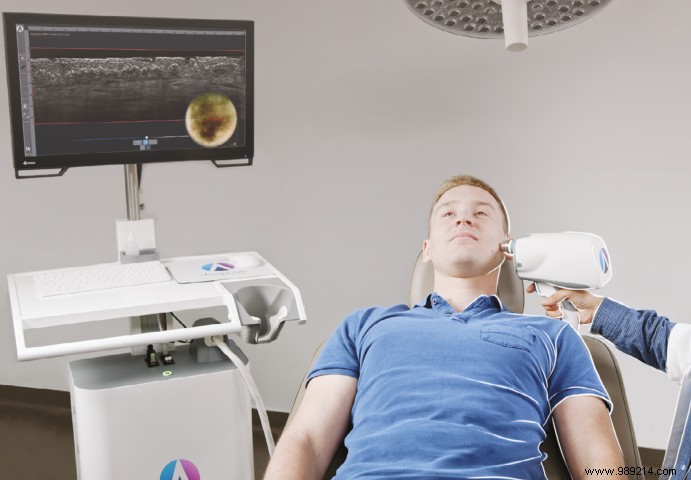A French start-up has developed an innovative optical technology that provides a detailed view of the cellular structure of the skin. This is a non-invasive method, the purpose of which is to quickly detect cancerous lesions.
According to the Foundation for Medical Research, each year in France about 80,000 skin cancers are diagnosed . Two forms exist:carcinoma and melanoma, the latter being the most serious. It is generally diagnosed at a fairly advanced stage so that the results are clear:14,000 Europeans die from melanoma each year.
Based on this observation, the start-up Damae Medical has developed a technique that promises earlier detection of the disease . However, the earlier the detection, the greater the chances of survival. According to Anaïs Barut, co-founder of the company, the 5-year patient survival rate is approximately 98% when melanoma is diagnosed at stage 1.

In general, the diagnosis of carcinomas and melanomas is made using a biopsy, an invasive procedure whose results come after one or two weeks. Damae Medical promises real-time diagnosis using cellular visualization of the deep tissues of the skin. The start-up has developed a portable optical imaging device, acting as a kind of probe to analyze the skin by simple contact. It is therefore a faster method but above all non-invasive.
This innovative optical technology brings together the advantages of two techniques well-known:optical coherence tomography (OCT) and confocal reflectance microscopy (RCM). The first is an imaging technique by interferometry allowing vertical optical sections, the depth of exploration of which is of the order of a millimeter. The second allows horizontal sections with cellular resolution to a depth of 200 μm.
In the pre-marketing phase since 2018 – as explained by the CNRS Journal – this device called deepLive (PDF in English/2 pages) now equips around ten hospitals in five countries. This is a test phase, supported by a funding from the European Commission up to 2.4 million euros. Thus, Damae Medical is currently working on the clinical validation of its device. The objective? Deploy the latter on a larger scale.
In addition, the start-up wants to expand the applications of its innovation. According to officials, the device could, for example, visualize the effects of a moisturizer or a dermatological pharmaceutical treatment. Thus, it could be used in the dermo-cosmetic industry but also to monitor dermatological treatments.